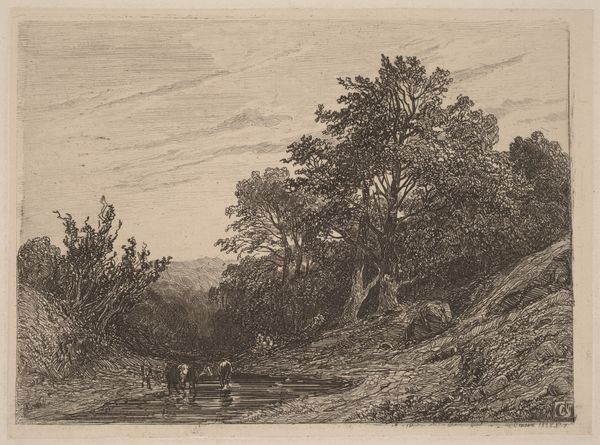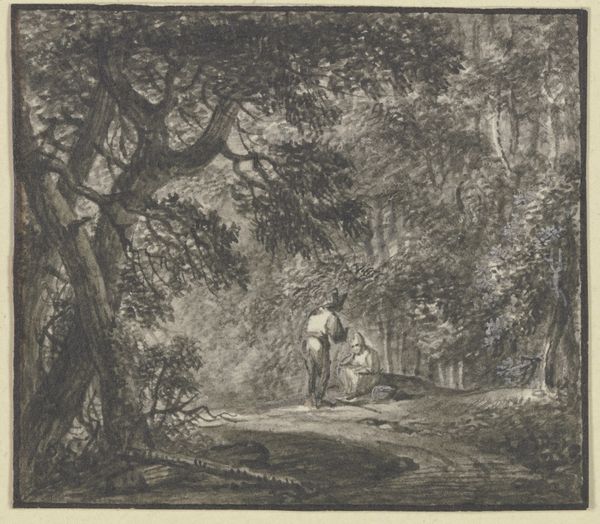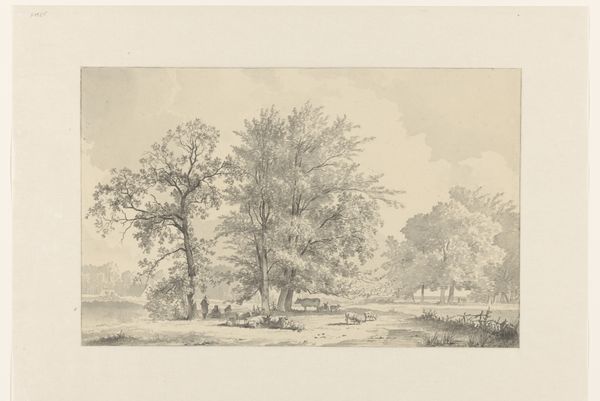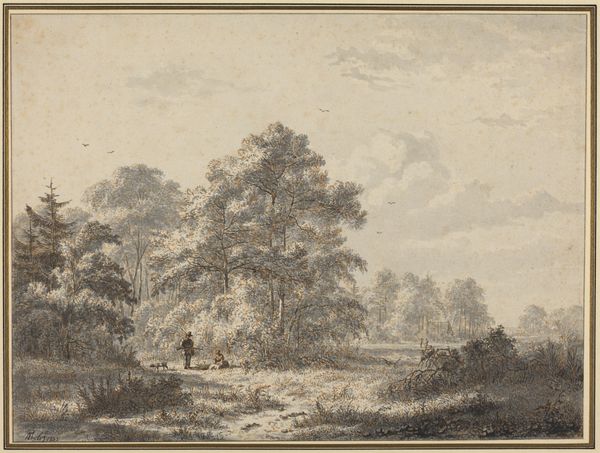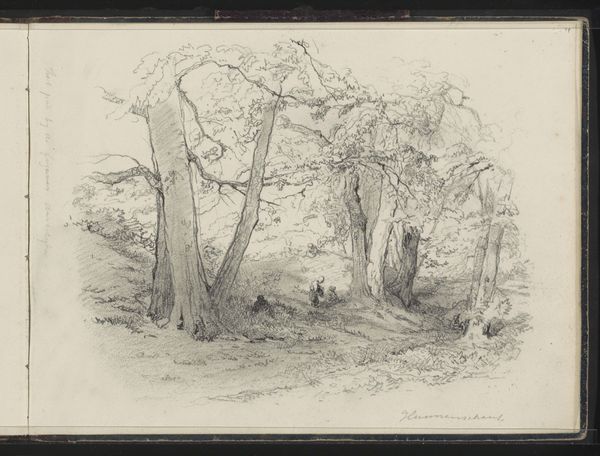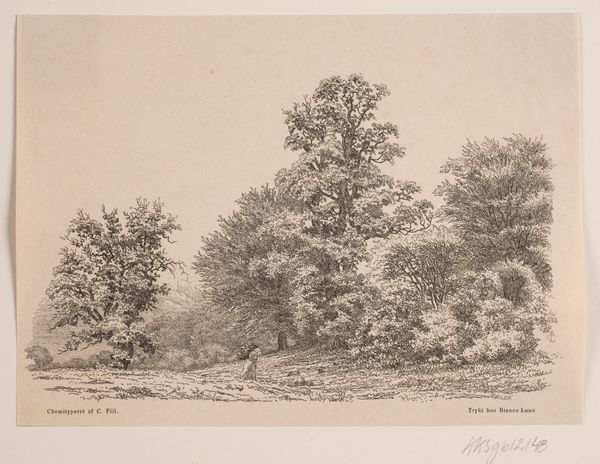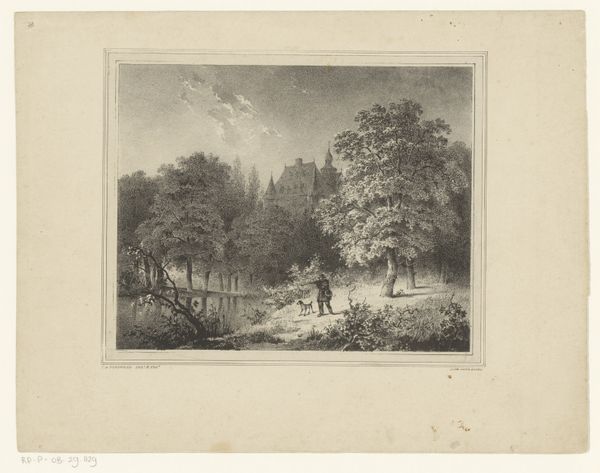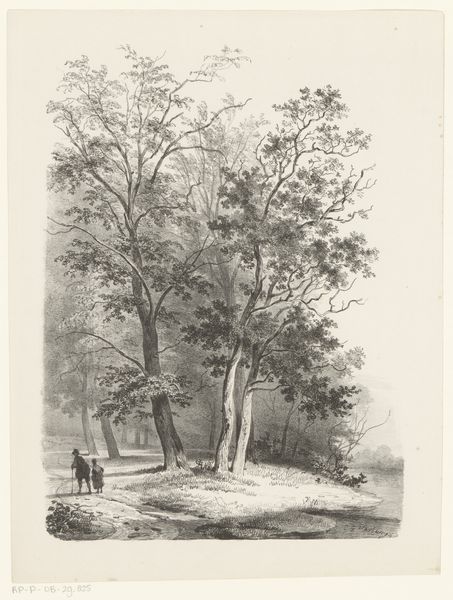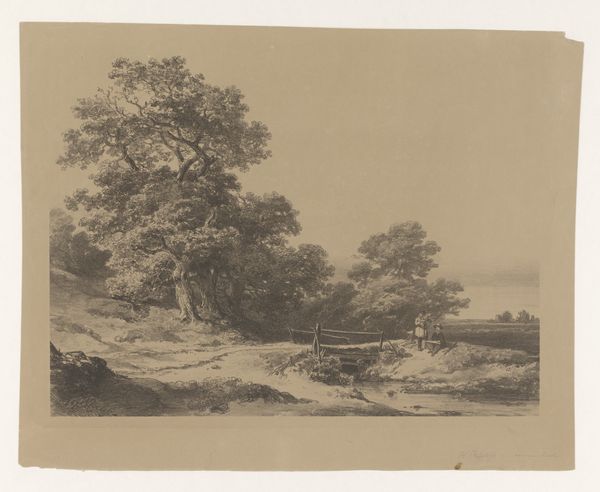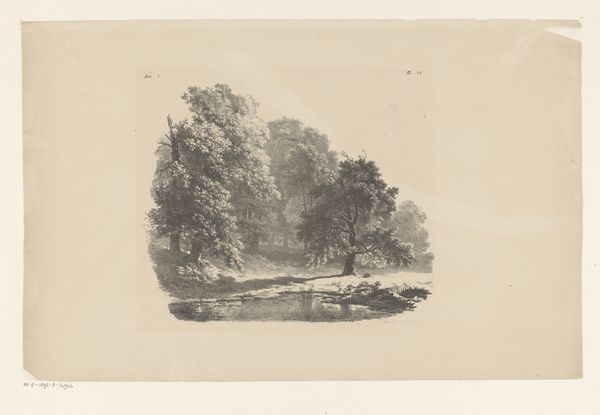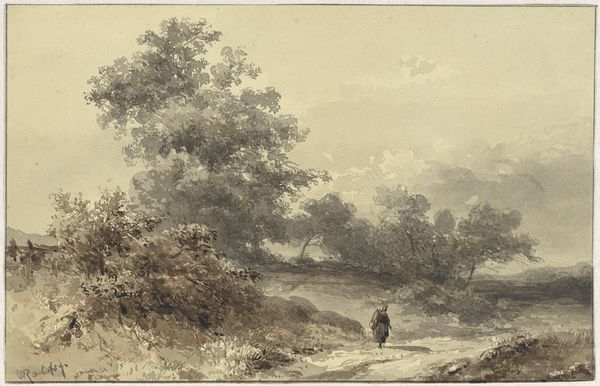
print, etching
# print
#
etching
#
landscape
#
romanticism
#
realism
Copyright: National Gallery of Art: CC0 1.0
Karl Bodmer's "Canards Sauvages" is an interesting work on paper, made using a process that democratized art in the nineteenth century. It's a lithograph, meaning that the image was drawn on a flat stone and then printed mechanically. Think about the implications of this, compared to say, a unique painting. The lithographic process allowed for many identical impressions to be made quickly and relatively cheaply. This fueled the rise of mass media, bringing images to a wider audience. And that is particularly notable when considering the subject. Bodmer has rendered a landscape scene, complete with detailed foliage, trees, and wild ducks by the water. But what is the social context of this image? Is it a straightforward celebration of nature, or is it also about the relationship between nature and culture? The artist's interest in this work, lies in its making, and the means of production in which it was created. The subtle tonality and fine lines achieved through lithography allowed artists like Bodmer to create works that were both aesthetically pleasing and commercially viable. This blurring of boundaries between art and commerce is what makes this print so compelling.
Comments
No comments
Be the first to comment and join the conversation on the ultimate creative platform.

